Root Canal Therapy
When most people hear the words “Root Canal” they think of pain when in fact, the procedure itself is rarely if ever painful. When a tooth becomes infected it can certainly be excruciating, and a root canal is one way to relieve the pain. So the reason individuals’ often-associate pain with root canals is most often due to the pain leading up to the procedure itself.
Drs. Risinger and Shadix perform most root canal procedures in office with exception to complex cases that require the equipment and expertise of a specialist.
What does treatment involve?
Root canal treatment involves one or more visits. There are several steps that the dentist or endodontist will perform to save your tooth:
- First, your tooth is numbed for your comfort. The dentist will put a thin sheet of latex or nitrile over the tooth to isolate it from as much saliva and bacteria as possible. An opening is made through the crown of the tooth into the pulp chamber.
- The tooth's nerve or pulp is then removed from both the inside of tooth (pulp chamber) and the root canal (the space inside the root). Each root canal is cleaned and shaped so it can be filled.
- Medicine will be placed in the pulp chamber and root canal to help get rid of bacteria.
- A temporary filling will be placed in the opening of the tooth to stop saliva from getting into the chamber and root canals. You might also be given antibiotics if infection has spread beyond the end of the root(s). If your dentist prescribes medicine, use it only as directed. If you have any problems with the medicine, call the dentist.
- During the next stage of treatment, the temporary filling is removed. The root canals are usually filled with a rubber-like material to seal them.
- In the final step, the tooth may be restored by a crown or a filling to strengthen it and improve the way it looks. If an endodontist performs the root canal treatment, he or she will usually recommend that you return to your general dentist for this step.
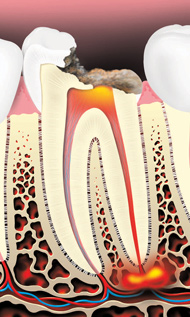 |
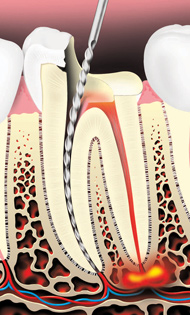 |
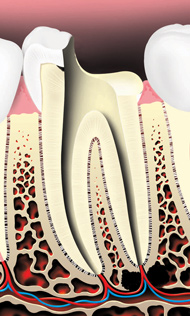 |
| Tooth decay can cause an abscessed (infected) tooth. | The decay is removed and an opening is made into the pulp chamber. | The pulp and nerve are removed, and the root canals inside the tooth are cleaned and shaped. |
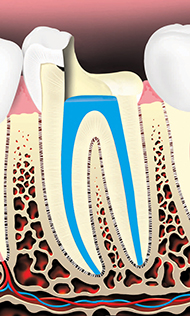 |
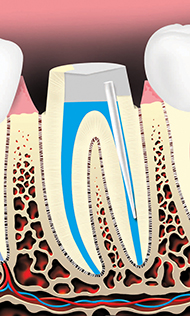 |
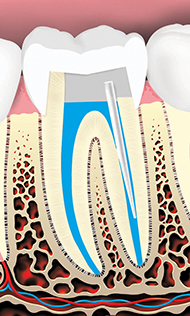 |
| The root canals and pulp chamber are filled. | A metal or plastic rod or post may be placed in the root canal to support the crown. | The crown of the tooth is then restored. |
How long will the restored tooth last?
A tooth with a root canal filling can last for years. Teeth with root canal fillings can, however, become decayed or fractured, or get gum disease, just like any other teeth. Daily cleaning and regular exams will help you keep your teeth healthy, whether they've had root canals or not.
How much will it cost?
The cost associated with this procedure can vary depending on factors such as the severity of damage to the affected tooth and which tooth is affected. In general, endodontic treatment is much less expensive than tooth removal and replacement with an artificial tooth.








